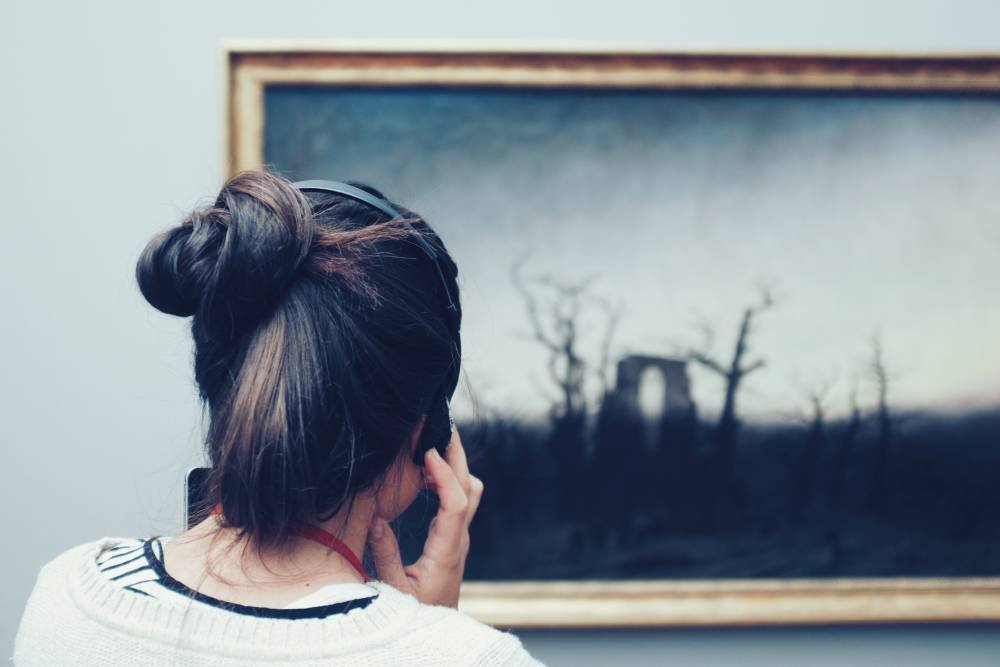What is Museum Translation?
If you’ve ever visited a museum, art gallery or cultural institution in a country where you don’t speak the language, you will have relied on the wall texts next to the artworks to learn about each piece. Or perhaps you grabbed an audio guide at the desk to accompany you on your own self-guided tour. Ever picked up one of those gorgeous, thick, beautifully bound art books and been grateful to have each article translated into English?
Why is Translation so Important for Museums?
Museums are historical institutions that date back centuries. They hold the key to the stories of civilization, offering data and insights into our triumphs and defeats, our wars, our love stories, ancient cultures, customs and peoples. Museums are designed to inspire, entertain and educate. But how can they bring their stories to life if they’re limited to the local language?
According to the European Museums Network, the Louvre is the most visited museum in the world with over 9 million guests each year. It is home to works like the Mona Lisa, the Venus de Milo and The Raft of Medusa. Imagine if none of the information provided to inspire, entertain and educate visitors around these works was translated. What if the materials were only provided in the original language of each piece?
In today’s world, diversity and inclusion are hot topics. How can museums, galleries and cultural institutions ensure that they are offering an inclusive experience to each and every visitor, regardless of ethnicity, race or language? How can they make sure their mission of educating and inspiring future generations is continued? In a world where globalization is the new norm, translation is a tool that helps museums stay on track with these new demands. That’s where museum translation comes in.
How to Get Started With Translation
Translate your website. When people are visiting a new city, they’ll often look to the local tourism office or scan the Web for sights that are worth visiting. Museums and galleries are a hot spot, perfect for brushing up on some history and culture while spending time in a new city. English is the default language for most people around the world, so having your website in English makes you automatically accessible. Visitors can look at what your institution has to offer and decide whether a visit is worth their time.
Next up: maps. A visitor’s first point of contact when entering your institution is the map, often included in the price of entry. If you can offer guests a map in English, or better yet, in one of several languages, they will feel welcome and better prepared to navigate the grounds. You can offer short explanations of exhibits and some context on the works on display. These short snippets of information are brief and to the point, and since most translators charge by the word, they won’t cost much in translation fees.
Step 3: audio guides. Audio guides are a fantastic tool for visitors who don’t speak the local language. Visitors can grab some headphones and select their language, and in no time at all, they’re having nearly the same experience as a guest who speaks the local language. Some might even say their experience is more interactive, as they’re enjoying a deep and meaningful story on each piece of art, narrated for them by a voiceover artist
The best part about having audio guides translated in your institution is that you can use excerpts of the recordings on your website to draw an even wider audience to the museum.
The final step: wall texts and labels. For those who prefer to part with the electronics for a while, and to rely on the wall texts and labels next to each piece, translation is key. Since wall space is limited, most museums opt for wall texts and labels in the local language, followed by English. Offering this service to your guests shows that you care about inclusion, and that engaging and offering full access are your top priorities.
Creating a Richer Experience with Translation
In the end, museum translation is all about inclusion, diversity, and storytelling. Presenting and showcasing history’s most significant works is a crucial mission, but it’s not enough. The stories must be told. And we all want to experience, see, feel, touch and learn in a language we understand.
If you’d like to learn more about the power of storytelling through translation, and how I can help you expand and attract a more diverse audience, reach out to me to schedule a chat. Your message matters!
If you are looking for help in translating your messages from French into English or German into English, then please get in touch today!
Cynthia Pecking is a professional French and German translator specializing in creative content, arts and literature, with a Masters of Arts in Translation from the Middlebury Institute of International Studies at Monterey in California. She has spent the past 13 years helping clients expand their message. She is based in Hattingen, Germany, where she lives with her husband and two children.

